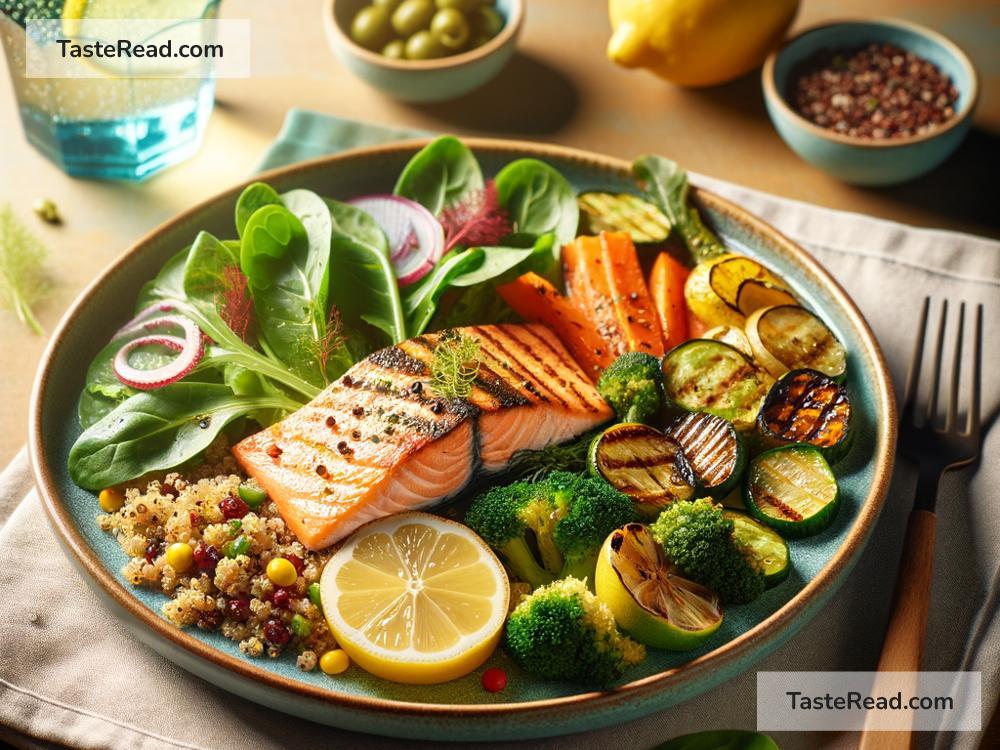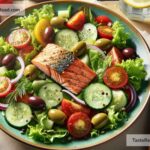The Benefits of a Balanced Diet for Blood Pressure Control: Supporting Cardiovascular Health
Did you know that what you eat can have a big impact on your blood pressure? It’s true! The foods you choose each day play an important role in keeping your heart and blood vessels healthy. A balanced diet is one of the best tools to manage your blood pressure and support your overall cardiovascular health. In this article, we’ll explore some of the amazing benefits of eating well and how simple changes in your diet can lead to big health improvements.
What Is Blood Pressure and Why Does It Matter?
Before diving into the benefits of a balanced diet, let’s first talk about blood pressure. Blood pressure is the force of blood pushing against the walls of your arteries as your heart pumps. Having too much pressure in your arteries, known as high blood pressure or hypertension, can strain your heart and damage your blood vessels. Over time, uncontrolled high blood pressure can lead to serious health problems including heart disease, stroke, and kidney disease.
The good news? High blood pressure can often be managed through lifestyle changes—including eating a healthy, balanced diet.
What Is a Balanced Diet?
A balanced diet includes foods from all the major food groups in the right amounts. These groups are fruits, vegetables, grains (especially whole grains), proteins (like chicken, fish, beans, and tofu), and dairy or dairy alternatives. The key is variety—eating different foods helps make sure your body gets all the nutrients it needs.
But a balanced diet doesn’t just mean eating enough fruits and veggies. It’s also about limiting unhealthy choices like too much sugar, salt, and saturated fats, which can negatively affect your blood pressure and heart health.
How Does a Balanced Diet Benefit Blood Pressure Control?
Eating a balanced diet supports blood pressure control in several important ways:
1. Reduces Excess Sodium (Salt)
One of the leading causes of high blood pressure is eating too much sodium. Sodium is found in table salt, processed foods like chips and fast food, and even hidden in canned goods and sauces. High levels of sodium cause your body to retain water, which can increase blood pressure.
A balanced diet encourages eating fresh, whole foods like fruits, vegetables, and lean proteins, which are naturally low in sodium. Consuming more of these foods can lower your sodium intake and help prevent spikes in blood pressure.
2. Provides Essential Nutrients
Certain nutrients are especially good for controlling blood pressure. For example:
- Potassium helps balance the effects of sodium in your body, keeping your blood pressure stable. Foods rich in potassium include bananas, spinach, avocados, and potatoes.
- Magnesium relaxes blood vessels and improves blood flow. You can find magnesium in nuts, seeds, dark leafy greens, and whole grains.
- Calcium supports overall heart health and helps maintain healthy blood pressure. Dairy products, fortified plant-based milks, and leafy greens are good sources of calcium.
By eating a variety of foods, you can naturally get more of these important nutrients.
3. Helps Maintain Healthy Weight
Carrying extra weight puts more stress on your heart and can increase blood pressure. A balanced diet that includes nutrient-rich, lower-calorie foods can help you lose and maintain a healthy weight. For example, swap fried foods and sugary treats for baked options, fresh fruits, or yogurt.
Not only does maintaining a healthy weight lower your blood pressure, but it also reduces the risk of heart disease and other health problems.
4. Improves Cholesterol Levels
Poor eating habits often lead to high levels of “bad” cholesterol, which can clog arteries and raise blood pressure. A balanced diet encourages eating healthy fats instead of unhealthy ones. For example:
- Choose foods high in unsaturated fats, like avocados, nuts, and olive oil.
- Avoid foods high in saturated fats and trans fats, such as fried foods, pastries, and fatty cuts of meat.
Healthier cholesterol levels mean better heart and blood vessel function—and, in turn, better blood pressure control.
Tips for Eating a Balanced Diet
Making changes to your diet doesn’t have to be difficult. Here are some simple tips to get started:
- Fill Half Your Plate with Fruits and Vegetables: These foods are rich in nutrients and low in calories, making them great for your heart and blood pressure.
- Choose Whole Grains: Swap white bread, white rice, and sugary cereals for whole-grain options like quinoa, brown rice, and whole-grain pasta.
- Go Lean with Protein: Eat less red meat and opt for chicken, fish, beans, or tofu instead.
- Limit Processed and Packaged Foods: These are often high in sodium and unhealthy fats. Fresh, homemade meals are usually better for your health.
- Stay Hydrated: Drink plenty of water instead of sugary sodas or energy drinks.
Final Thoughts
A balanced diet isn’t just about weight loss—it’s a powerful way to protect your heart and lower your blood pressure. By eating a variety of nutritious foods and limiting unhealthy ones, you can take control of your blood pressure and support your cardiovascular health. The best part? You don’t have to overhaul your entire lifestyle overnight. Small, gradual changes in your diet can make a big difference over time.
Take the first step today—add an extra serving of vegetables to your dinner plate, or swap your salty snack for a handful of nuts. Your heart will thank you!


